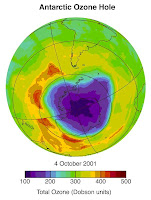 |
| Anthony Leiserowitz |
 |
| Many Nations Longhouse at the University of Oregon |
Looking back over the past decade or so, there has been a generally moderate level of belief that climate change has occurred and is continuing, but then a sudden drop in 2010, and since then belief has still not been back up to periods prior. Leiserowitz likens this to the proceedings of the tobacco debates many years ago and that many Americans feel climate change is less about themselves as Americans, but much more as a distant issue. This phenomenon he mentions is a key point; that there is a disassociation of the issue between every day Americans and the effects along with solutions of climate change.
In 2010, Leiserowitz points to a perfect storm of issues that caused this sudden decline in public opinion towards climate change. The five major sources coming from the 1) economic recession, 2) declining media coverage, 3) unusually cold weather, 4) an effective denial industry, 5) "climategate" (wikipedia article). Many of these issues were propagated through a very strong message of denial through the rise of the Tea Party and Republican control of the House of Representatives.
| Leiserowitz Speaking at the U of O |
When he asked the crowd, which was almost bursting outside of the medium sized room, what the first image was when they heard the term climate change or global warming, overwhelmingly (including myself) pictured ice melting. From his research, he has found that this is the most common image in the American mind and it is one that creates a problem. "How many people here live or have been to Antartica?" he asked us. No one had raised their hands. "There is the problem, this reinforces the distant association of the issue. Americans don't associate the positive feedback effects or the connections of the issues."
 |
| O-Zone Hole Model |
 |
| Shocking Image of Climate Change |
Leiserowitz points to how there is a significant difference between the egalitarian mindset, one that favors the equality among living entities, and the individualism present in American culture. Interestingly enough, the most important issue to the individualism mindset is the demand for freedom and independence of fossil fuels and of foreign based energy sources. When asked if this mindset is present in other nations around the world, Leiserowitz cites that the four most common places, Canada, the United States, United Kingdom, and Australia, all have two things in common; all are of ruggard frontier mindsets (minus the U.K.) and are English speaking. Does this translate perfectly, he was not willing to say definitively, but merely suggested some link in ideology.
In conclusion, Leiserowitz suggests a few ideas towards the future with climate change. First, a diverse support of the population is needed, not just from a few politicians, concerned citizens, and scientists, but that many more people need to form a silent majority of sorts, that support their electorate to make decisions that will be rewarded. Next, to recognize that many people who are very strongly in support of addressing the issue live in bubbles. Noting that here in Eugene, we are a sub-culture of super green fanatics, and that this is not something seen in other places around the United States. For example, when I was in New Orleans working on a post hurricane Katrina service project, I never came across recycling stations or really anything of the concept. Finally, that knowledge is necessary but insufficient, rather that we need societal demands and actions of change rather than individual ones.
If you would like to learn more about Anthony Leiserowitz and his work surrounding climate change and public opinion, please follow the link below to his profile at Yale and his web-site. Also, be sure to watch the video below, where Leiserowitz explains the Six Types of Americans.
Additional Links:
Profile:
http://environment.yale.edu/profile/leiserowitz/
Yale Project on Climate Change Communication Homepage:
http://environment.yale.edu/climate/
No comments:
Post a Comment